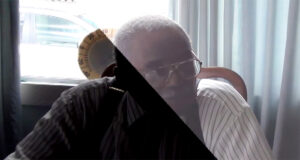
By Colette Córdova and Daniel Mason
History Forgotten and Now for All to See, a documentary about the rural Great Migration African American Community of Braceville, Ohio, is a captivating film that unveils the rich tapestry of Braceville, a “Small Town with Big History.” This remarkable town is the birthplace of numerous notable figures, who have left an indelible mark on the world.
Colette Córdova, of Toledo, met Daniel Mason, of the Cleveland area, a film editor and technical director of the film, while working on a political campaign and began working on projects that promote advocacy, especially for people of color, including this documentary. “I was amazed at all of the work that goes on behind the scenes and the countless hours needed to perfect a film,” said Colette Córdova, Vice President of ALAS, the Escuela SMART Academy Advisory School Board. “Given the times we are in now, it’s more important than ever for oppressed populations to get our history out there. Both the Latinx and African American communities have been marginalized for too long.”
Mr. Mason feels at the core of the film is a question: “How did this community, who escaped from the Jim Crow south—some of them fleeing with nothing in the middle of the night—end up producing so many notable sons and daughters? What was it about this particular community that led them to live the American Dream, when so many other communities “set aside” for people of color were actively prevented from reaching their potential? How did a small community of maybe 90 families, even at its peak—sitting in a flood zone in the countryside of Ohio—improbably produce multiple millionaires, an Olympian, hall of fame boxers, a member of Jackie Robinson’s All Stars, state track and field record-holders, filmmakers, and many other notables? And, maybe even more importantly, how is it that they are all just about the nicest people you have ever met?”
Mr. Mason said he knows, “some people are rightfully wary of AI in film—and elsewhere,” but he believes “when you are trying to help marginalized people’s voices be heard—and the historical record is often by the nature of said marginalization scant,” he thinks “any tool that can help is worth using.” Mr. Mason added, “As Howard Zinn’s A People’s History of the United States… there is so much more to learn about how people actually lived from primary sources and from a ‘bottom up’ approach, rather than a ‘top down’ history of ‘Great (usually white) Men’—history as we have traditionally been taught it.
Mr. Mason hopes that these techniques and some emerging software will allow him and others to tell stories of the wisdom that would otherwise be lost. He says, “Every neighborhood, often every generation, has multiple stories worth telling.” Because he says, “There are stories and characters everywhere. We only have to think back to our childhoods, and of all the individuals who left a mark on our memory, helped us form our values and who we are. Most of us have not gone back and interviewed our parents, neighbors, friends—at least not formally. But there is so much there. Lifetimes of accumulated experience, wisdom—and often humor. I encourage everyone to take out their phone (with permission and ideally a heads up, of course), and document the stories of their elders and other interesting people they may know. Sometimes the people you want to interview are not comfortable on camera, but will often let you record a voice memo—you most certainly know people who like to tell stories, and our memories of these stories years later are often sadly lacking.”
Mr. Mason then went on to discuss implications and potentials of these new ways of storytelling: “These stories need not be one unedited shot of your abuelo (though that is quite important to have a copy of if possible, properly backed up in “the cloud”), but could include cutaways to photographs and even AI recreations of historical events or just be integrated with existing copyright free footage, if possible (copyright ownership may not be needed for personal or educational use, but you never know where your story may lead or how many people may want to watch it if you post it online).
According to Mason, “It’s our responsibility to document these histories before they are lost, as we know others won’t—they’ll probably aim for the opposite. It’s perhaps almost equally as important to tell our audience when and how something is manipulated (AI or otherwise), and a good practice to provide access to the original sources of everything, for historical purposes.”
I encourage everyone reading this to reach out to us at and let us know of your interest. We want to preserve these voices for future generations—and ideally preserve them in a way that inspires younger generations to not just pretend they are listening, smile and say, ‘Sí, abuelo’—and then proceed to stare back down at their phones…”
History Forgotten and Now for All to See premiered at Robins Theater, 160 E Market St, Warren, Ohio on February 16, 2025. The hope is to bring it to Toledo in the coming year.

